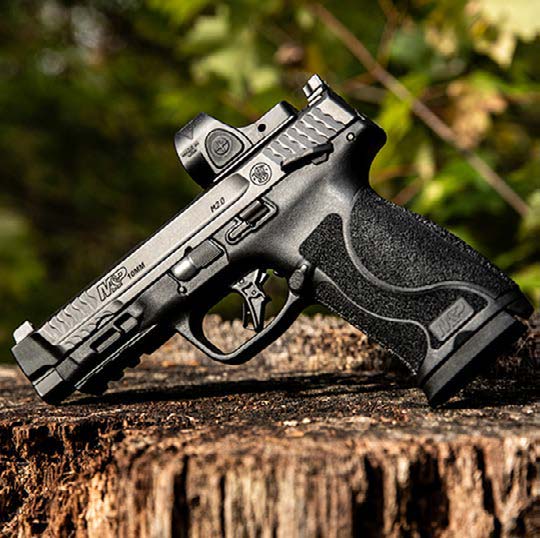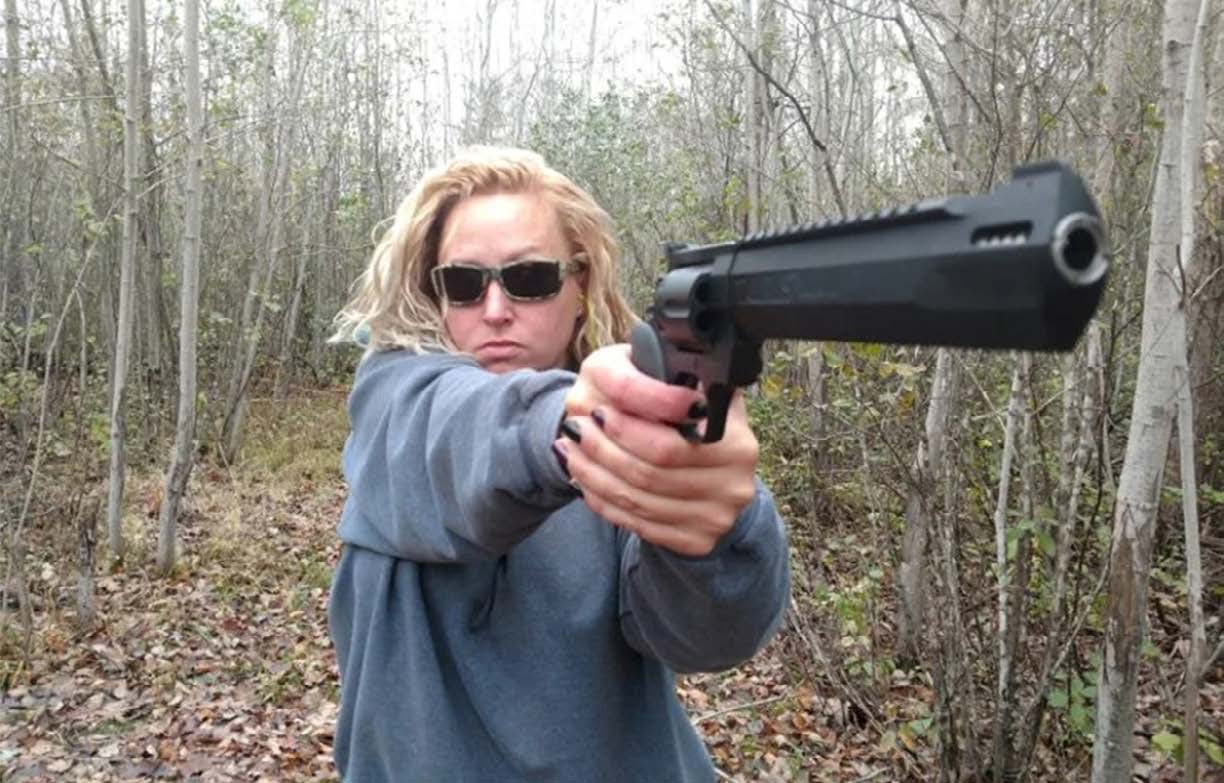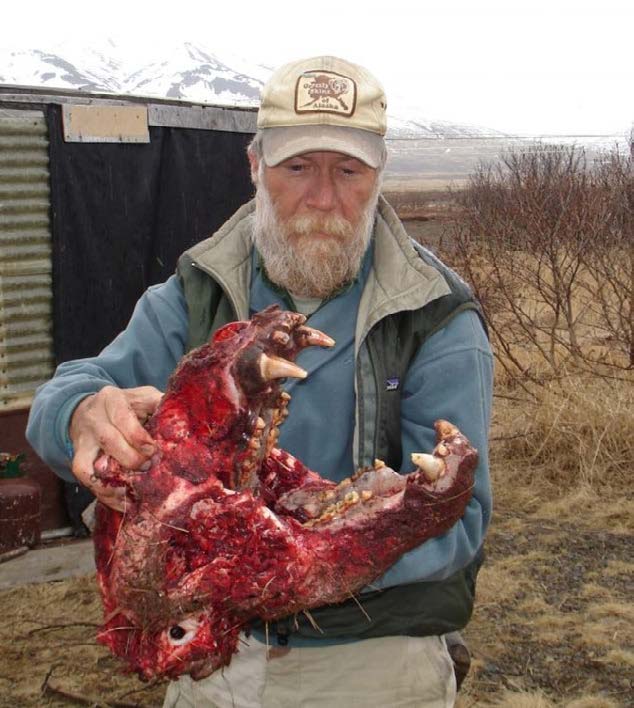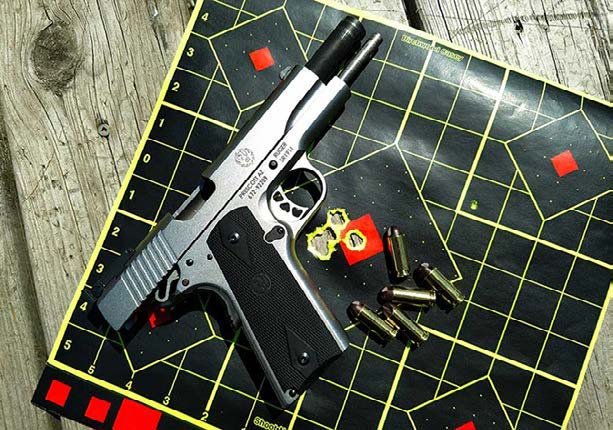In 2016, Alaskan fishing guide Phil Shoemaker made two discoveries: 1) Yes, it’s possible to use a handgun chambered in 9x19mm Parabellum on an angry grizzly bear; and 2) No, that method isn’t preferable.
On the day in question, Shoemaker was taking some fishing clients to a good spot for them to wet their hooks. He normally carried a Smith & Wesson 629 in 44 Magnum, but that day he decided to take his Smith & Wesson 3954 in 9x19mm Parabellum instead. After all, in more than three decades of guiding he’d never been faced with a charging bear.
Of course, that meant that on the day he only had his 9mm with him, a bear would come after his clients! He told the tale in a letter to Buffalo Bore Ammunition, the company that manufactured the 147-grain hard cast he used in his 9mm:
“We were in thick brush and I was only 8 or 10 feet from the bear when he started growling and huffing. I began yelling and it eventually ran around, behind my two clients, into the brush. But within 15 seconds it came charging back from the area behind us and popped out of the brush 10 feet from me!

I had the little S&W in my hands and was thinking that I was probably going to have to shoot it, but as it cleared the brush, the bear headed toward my clients. The man had enough sense to grab his wife and fall backward into the tall grass. The bear seemed to [lose] track of them, even though it was less than 3 feet away from them and it was highly agitated!
[The bear] then swung toward me. I was 6 or 8 feet away, and I fired the first shot into the area between the head and shoulder.[The bear] growled and started wildly thrashing around, still basically on the feet of my clients.
My next shot hit it in the shoulder, and [the bear] began twisting and biting at the hits, and I continued firing as fast as I could see vitals. Five shots later, it turned into the brush, and I hit it again, [then]it twisted and fell 20 feet from us!”

A Test Case?
In the years since the incident, handgun enthusiasts have pointed at this situation to prove their 9mm handguns are capable of handling everything from bunny rabbits to grizzly bears to aliens from outer space. And while they’re technically correct—that it’s possible to drop a predator with a handgun chambered in 9mm—that’s a far from ideal situation. In fact, after some time had passed, Shoemaker and I were discussing his experience and he admitted that he wouldn’t choose to use the 9mm again against a raging grizzly. Did it work? Sure, that time. Would it work again? No one knows, and no one’s volunteering to be the test subject.

What Caliber is Best?
The idea of one caliber standing above all others as the “best” for defense against a predator like a bear isn’t entirely accurate. There are quite a few cartridges that can do the job and which one you choose to carry depends on your needs and skill level. Remember, firearms are purpose-driven tools, meaning that the correct handgun should be chosen for specific uses.
Something Shoemaker agrees with is that the reason magnum cartridges are not necessarily ideal for defense against bears is that they’re too hard to control. If you’re fortunate, you might get one shot fired with fantastic placement before losing the ability to get back on target rapidly and accurately.
It does you no good to have a handgun if you can’t control it enough to use it to save your life. The cool factor behind carrying a handgun like a 44 Magnum not for hunting, but for self-defense, isn’t
worth the potentially negative outcome. It’s one thing to use it for handgun hunting and quite another to rapid-fire under incredible stress and the shaking pressure of an adrenaline dump.
What does that leave you with? Cartridges such as the 10mm Auto can be excellent for defense against predators. 10mm is powerful, yet controllable, and there are both semi-automatic handguns and revolvers available chambered in it. With the right 10mm, you won’t struggle to empty the magazine into whatever large, toothy predator is coming your way.

Will a Bear Attack?
Odds are you’ll never be attacked by a bear. Statistically speaking, you’re more likely to be assaulted by a two-legged predator than by a four-legged one in the wild. (The odds of a bear attack are 1 in 2.1 million, while the CDC states the odds of being murdered by a two-legged attacker are 1 in 18,989. Of course, the balance of those odds depends on who you are and what you do.)
When it comes down to it, you cannot control whether or not you’re charged by a bear or some equivalent beast. They choose the time and place, just as human attackers do. All you can do is be prepared, and the best way to do that is by carrying a handgun in the largest caliber you can fire accurately and rapidly while under stress. And while you’re picking a defensive handgun, get a tourniquet, too.
After all, you are your own first responder, even in the woods.
Per our affiliate disclosure, we may earn revenue from the products available on this page. To learn more about how we test gear, click here.




